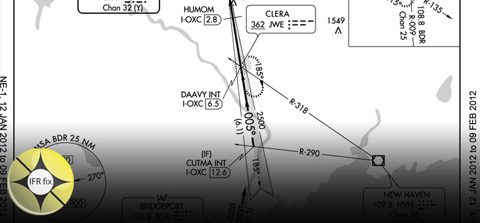
What’s the difference between inventiveness and error?
Even in the structured world of instrument flying, the answer sometimes boils down to success having many parents, and failure being the orphan.
The question arises in the context of how someone flew a procedure turn. Turns out there are multiple ways to do it, making it no simple matter to call a questionable maneuver an outright blunder. Many readers apparently agree.
In the Jan. 13 “ IFR Fix: IPC Report Card,” readers answering the column’s poll question were asked to give a thumbs up or thumbs down to the pilot’s successful completion of an instrument proficiency check, based on the scenarios discussed in a hypothetical coffee-shop conversation between the pilot and his CFII.
At last check, 1,277 readers had weighed in, with 66 percent voting to sign the pilot off, and the others unwilling. (Thanks to all for voting.)
Two of the pilot’s three slipups during the flight were common omissions: forgetting to time a final approach segment of an ILS (recommended in case of glideslope failure), and missing a new altimeter setting while coping with high workload.
The third slip was a more drastic way to raise the CFII’s eyebrows: He began an unexpected course reversal maneuver during a procedure turn on a routine VOR-A approach—the kind depicted on government-issue plates by a barbed arrow showing headings, and less clearly, direction of turns, for reversing course.
Was it that, or the sum of his omissions, that earned him 435 downward-pointing thumbs?
What’s worth contemplating is that the published procedure isn’t mandatory.
From the Aeronautical Information Manual: “Headings are provided for course reversal using the 45 degree type procedure turn. However, the point at which the turn may be commenced and the type and rate of turn is left to the discretion of the pilot.” The AIM and other texts discuss other methods.
The critical issue for a CFII to judge is whether the pilot had a plan, or was just disoriented. Also, an IPC proves its worth if the pilot shows that he can recognize his maneuver’s drawbacks on the fly, and adjust. Enlightened, he will focus future attention on the “why” of chart nuances.
Speaking of chart nuances, a typographical error somewhere on this ILS approach plate (Jan. 12 – Feb. 9 edition) takes sharp eyes to spot. If you think you found it, check next week’s column to see if you’re right.



